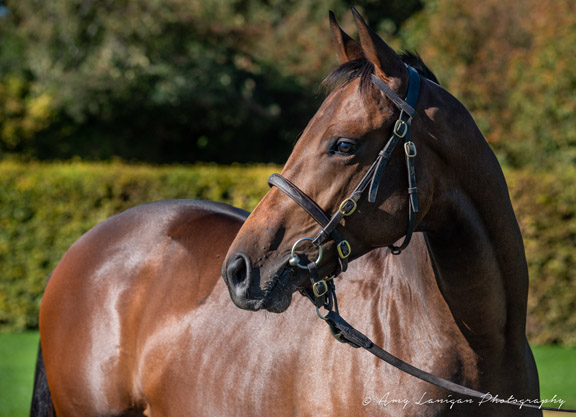By Chris McGrath
Whether the market can maintain its breathless bull run in 2019 looks like becoming the $1-billion question so far as trade in transatlantic yearlings is concerned. Figures provided by The Jockey Club show an arc in aggregate sales across North America and Europe this year–up $66,763,974 to $942,688,570, a climb of 7.6%–steep enough, if maintained, to break 10 figures next year.
Measured on such a scale, of course, the market bears little coherent analysis. These tables embrace every yearling sold from the 3,500,000gns son of Dubawi (Ire) who topped the bill at Tattersalls in October to the $8,000 gelding by Gold Aly–a son of Medaglia d'Oro and, according to the catalogue, sire of four crops of racing age, 11 foals, nine starters and five winners (55.5%: pretty good going, dude)–who was the last yearling to change hands at a sale in Arizona last week.
The behaviour of individual tranches of the market is far more legible in year-on-year comparison of particular sales. But the headline growth is largely attributable to the top end of the American market, where three summer sales staged by Fasig-Tipton (July in Lexington, and the Select/New York-bred auctions in Saratoga in August) plus Keeneland's September marathon between them achieved $85,027,900 growth this year. That fully accounted for a $79,551,813 gain in the overall North American market, itself representing a remarkable 17.4% on the 2017 gross.
Granted a $12,787,840 drop in European transactions, a 3.1% decline on 2017, the top end of the American market also carried the gain in intercontinental figures. Any European trends that might be perceived across the past five years, however, need to be treated with extreme caution.
On the face of it, the European market is worth less now than in 2014, and likewise the average. But currency conversion makes comparisons hopelessly skewed, sterling (and guineas!) having been holed beneath the waterline following the Brexit referendum of 2016. As noted here in a review of Tattersalls Book 1, while turnover this time was 34.3% higher than in 2014, conversion at the prevailing rate of exchange made the average lot worth $393,893 five years ago and $376,564 in 2018.
Judged purely by its domestic ledgers, however, the premier Tattersalls catalogue amply complemented the boom continuing in equivalent auctions across the water, namely the Saratoga Select Sale and Keeneland's elite sessions. With Goffs Orby and Arqana August only nudging turnover up and down, respectively, the dip in the overall European market instead traces to its lesser sales, many of which recorded diminished indices. This partly reflected the burning of so many fingers at the breeze-up sales this spring.
John Boyce has demonstrated how–in persuasive contrast with the purely anecdotal and chronic complaints of vendors–post-recession growth in the European market, by average, has actually been sustained through the deciles.
But today's figures, showing increased catalogues and reduced clearance, do give some substance to the notion that the market cannot support such huge books recklessly assembled for unproven sires of ostensibly “commercial” profile–measurable, notably, in Ireland's foal crop, which reached 9,689 in 2017 from 7,546 in 2012.
In 2018, 6,890 European yearlings were viewed as commercial commodities–i.e. entered for a sale–compared with 6,062 in 2014. That is an increase of 13.7%. But while the rate of scratchings remained virtually the same, the clearance rate shrank from 83.54% to 78.48%. That translates to 1,350 unwanted yearlings, up a whopping 48.8% from 907 in 2014.
The clearance rate at American sales is historically weaker than in Europe, but this year's figure of 74.93% is the best in the last four years. The number of yearlings entering the commercial mill has increased by 9.3% since 2014, not quite as steep a rise as in Europe but from a relatively stagnant foal crop.
Catalogue scratchings are also consistently higher than in Europe, but this is evidently becoming a much more serious issue–reflecting, perhaps, the ever greater power wielded by the sales vet.
In 2018, withdrawals from North American yearling sales rose for the third time in four years (the one exception distinctly marginal). In 2014, 13.04% of hips failed to make the ring; this year, defections were up to 15.63%.
There are, of course, 101 different reasons for a horse failing to make the ring, but something is definitely going on when you get close to one-in-six dropping out, just five years after the ratio was closer to one-in-eight. (Strictly: one in 6.4, from one in 7.7).
I guess the nature of both beasts is that a vet will always cover his or her back, when so many things can go wrong even with a perfectly sound Thoroughbred. Time after time, however, you see people shrug their shoulders in the winner's circle after a big race and explain that they were only able to afford the horse because nobody else would take a chance on his X-rays.
Remember that the latest champion 2-year-old of Europe, where vets tend to be rather more indulgent, was never even offered for auction–as would normally have been his breeders' policy–because a perceived issue would probably not have got him past a sales vet.
And yet his younger brother was the most costly yearling sold in the world this year. So good luck trying to figure out where we stand with the 13,842 contemporaries, either side of the ocean, who changed hands for less.
Not a subscriber? Click here to sign up for the daily PDF or alerts.






